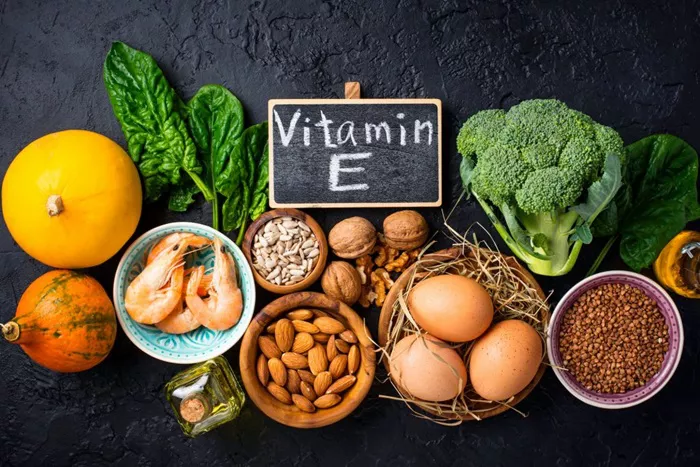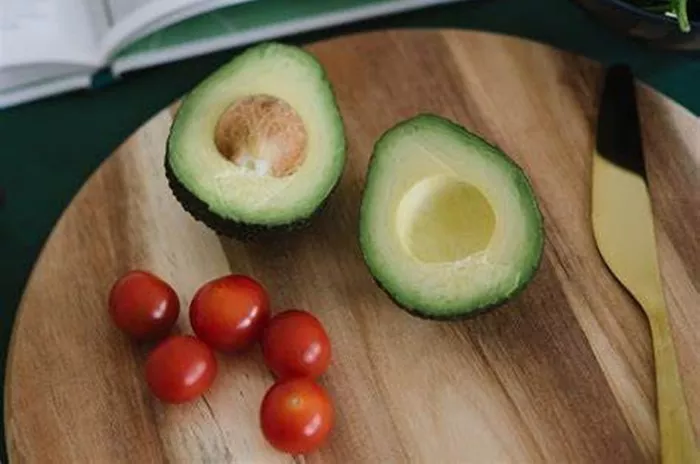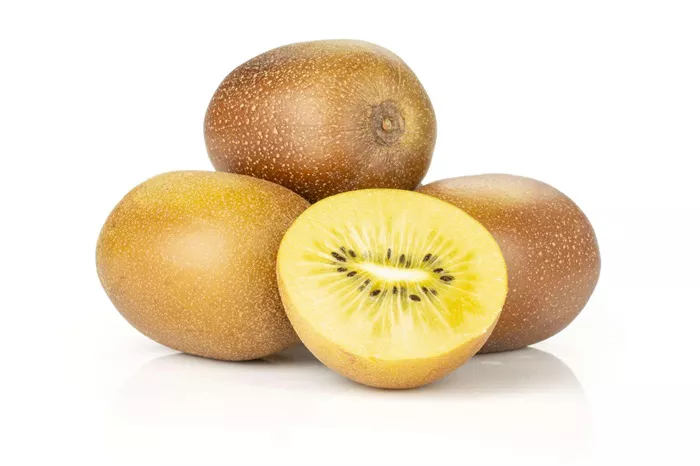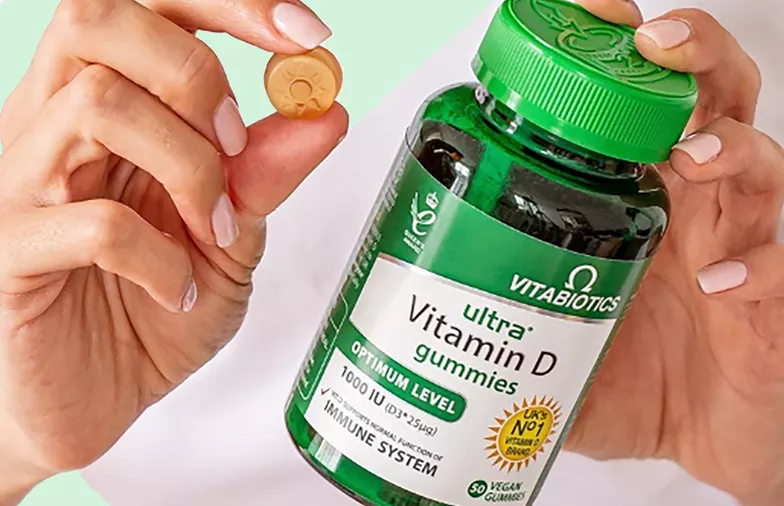Vitamin E is a crucial nutrient that plays a significant role in maintaining overall health. It acts as an antioxidant, protecting cells from damage caused by free radicals. It also supports immune function, skin health, and eye health. While vitamin E can be taken as a supplement, it is always best to obtain nutrients from natural food sources. This article will explore various foods rich in vitamin E, providing a comprehensive guide to incorporating this essential vitamin into your diet.
Understanding Vitamin E
Vitamin E is a fat-soluble vitamin composed of eight compounds, including four tocopherols (alpha, beta, gamma, and delta) and four tocotrienols. Alpha-tocopherol is the most active form in the human body and is often used in supplements. As an antioxidant, vitamin E helps to neutralize free radicals, preventing oxidative stress and cell damage. This is vital for maintaining healthy skin, eyes, and a robust immune system. Additionally, vitamin E supports cellular function and is essential for cardiovascular health.
Nuts and Seeds: Powerhouses of Vitamin E
Almonds
Almonds are one of the richest sources of vitamin E. Just one ounce (about 23 almonds) provides 7.3 mg of vitamin E, which is almost 50% of the recommended daily intake (RDI). Almonds can be enjoyed as a snack, added to salads, or used in baking and cooking.
Sunflower Seeds
Sunflower seeds are another excellent source of vitamin E. A quarter-cup serving of sunflower seeds contains 8.4 mg of vitamin E, meeting 56% of the RDI. They can be eaten on their own, added to trail mixes, or sprinkled over salads and yogurt.
Hazelnuts
Hazelnuts offer a significant amount of vitamin E, with one ounce providing 4.3 mg, about 28% of the RDI. These nuts can be enjoyed as a snack, added to baked goods, or used as a topping for oatmeal and yogurt.
Pine Nuts
Pine nuts are also rich in vitamin E. One ounce contains 2.6 mg of vitamin E, which is 17% of the RDI. Pine nuts are commonly used in pesto, but they can also be sprinkled on salads or incorporated into various dishes.
See Also: What Vitamins Can I Take with Folic Acid?
Vegetable Oils: A Liquid Source of Vitamin E
Wheat Germ Oil
Wheat germ oil is one of the highest sources of vitamin E. Just one tablespoon provides 20.3 mg of vitamin E, exceeding 100% of the RDI. This oil can be used in salad dressings, smoothies, or drizzled over cooked vegetables.
Sunflower Oil
Sunflower oil is another excellent source of vitamin E, with one tablespoon containing 5.6 mg, approximately 37% of the RDI. It is commonly used in cooking and baking.
Safflower Oil
Safflower oil provides 4.6 mg of vitamin E per tablespoon, about 31% of the RDI. This oil can be used for sautéing, frying, or in salad dressings.
Olive Oil
Olive oil, especially extra virgin olive oil, is a good source of vitamin E. One tablespoon contains 1.9 mg, about 13% of the RDI. Olive oil is widely used in cooking, salad dressings, and marinades.
Leafy Greens: Nutrient-Dense and Vitamin E-Rich
Spinach
Spinach is a versatile leafy green that provides a significant amount of vitamin E. One cup of cooked spinach offers 3.7 mg, about 25% of the RDI. Spinach can be used in salads, smoothies, soups, and various cooked dishes.
Swiss Chard
Swiss chard is another leafy green rich in vitamin E, with one cup of cooked chard providing 3.3 mg, roughly 22% of the RDI. It can be sautéed, added to soups, or used as a side dish.
Kale
Kale, known for its numerous health benefits, also contains vitamin E. One cup of cooked kale offers 1.2 mg, about 8% of the RDI. Kale can be used in salads, smoothies, soups, and as a side dish.
Fruits: Sweet Sources of Vitamin E
Avocado
Avocado is a delicious fruit that is rich in vitamin E. One medium avocado provides 4.2 mg, about 28% of the RDI. Avocado can be added to salads, sandwiches, smoothies, or enjoyed on its own.
Mango
Mangoes are not only sweet and tasty but also a good source of vitamin E. One cup of sliced mango contains 1.5 mg, about 10% of the RDI. Mango can be eaten fresh, added to smoothies, or used in various desserts.
Kiwi
Kiwi is a nutrient-dense fruit that offers vitamin E. One medium kiwi provides 1.0 mg, approximately 7% of the RDI. Kiwi can be eaten on its own, added to fruit salads, or used in smoothies.
Vegetables: Vitamin E in the Veggie Aisle
Broccoli
Broccoli is a cruciferous vegetable that contains vitamin E. One cup of cooked broccoli offers 2.4 mg, about 16% of the RDI. Broccoli can be steamed, roasted, or added to various dishes.
Red Bell Peppers
Red bell peppers are vibrant and rich in vitamin E. One cup of chopped red bell pepper provides 1.9 mg, about 13% of the RDI. They can be eaten raw, roasted, or added to salads and stir-fries.
Asparagus
Asparagus is another vegetable that contains vitamin E. One cup of cooked asparagus offers 1.5 mg, approximately 10% of the RDI. Asparagus can be grilled, roasted, or added to various dishes.
Fish and Seafood: Aquatic Sources of Vitamin E
Rainbow Trout
Rainbow trout is a nutritious fish that provides vitamin E. A 3-ounce serving contains 2.2 mg, about 15% of the RDI. Trout can be grilled, baked, or pan-seared.
Salmon
Salmon is another fish rich in vitamin E. A 3-ounce serving of cooked salmon provides 1.1 mg, about 7% of the RDI. Salmon can be grilled, baked, or used in salads and sandwiches.
Shrimp
Shrimp is a seafood option that contains vitamin E. A 3-ounce serving of cooked shrimp offers 1.2 mg, approximately 8% of the RDI. Shrimp can be grilled, sautéed, or added to pasta and salads.
Fortified Foods: Boosting Vitamin E Intake
Fortified Cereals
Many breakfast cereals are fortified with vitamin E. The amount can vary, but some cereals provide up to 10 mg per serving, meeting 67% of the RDI. Always check the nutrition label to determine the exact amount of vitamin E.
Fortified Juices
Some fruit juices are fortified with vitamin E. For example, certain brands of orange juice can provide up to 6 mg per cup, meeting 40% of the RDI. Be sure to read the label to find fortified options.
Fortified Plant-Based Milks
Plant-based milks, such as almond milk, soy milk, and oat milk, are often fortified with vitamin E. A typical serving can provide 2-4 mg of vitamin E, covering 13-27% of the RDI. Check the packaging for specific amounts.
Incorporating Vitamin E-Rich Foods into Your Diet
Balanced Diet
Incorporating vitamin E-rich foods into your diet can be easy and delicious. Aim to include a variety of nuts, seeds, leafy greens, fruits, vegetables, and healthy oils in your meals. This will not only provide vitamin E but also ensure a balanced intake of other essential nutrients.
Cooking Tips
To maximize vitamin E intake, consider the following tips:
- Use vegetable oils like sunflower oil or olive oil in cooking.
- Add nuts and seeds to salads, yogurt, or oatmeal.
- Incorporate leafy greens into smoothies, soups, and side dishes.
- Enjoy fruits like avocados and mangoes as snacks or in salads.
- Include vitamin E-rich vegetables like broccoli and red bell peppers in your meals.
- Choose fortified foods when possible, such as cereals and plant-based milks.
Conclusion
Vitamin E is an essential nutrient that supports various bodily functions and protects against oxidative damage. By incorporating a diverse range of vitamin E-rich foods into your diet, you can easily meet your daily requirements. Nuts, seeds, vegetable oils, leafy greens, fruits, vegetables, fish, and fortified foods are all excellent sources of vitamin E. With a balanced and varied diet, you can enjoy the health benefits of this important vitamin while savoring delicious and nutritious meals.
[inline_related_posts title=”You Might Be Interested In” title_align=”left” style=”list” number=”6″ align=”none” ids=”10431,10327,10299″ by=”categories” orderby=”rand” order=”DESC” hide_thumb=”no” thumb_right=”no” views=”no” date=”yes” grid_columns=”2″ post_type=”” tax=””]

































